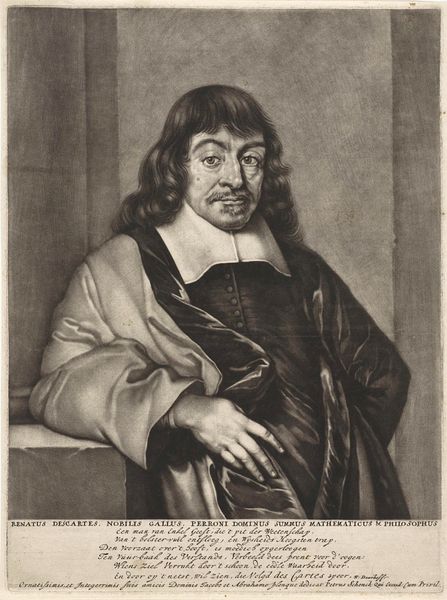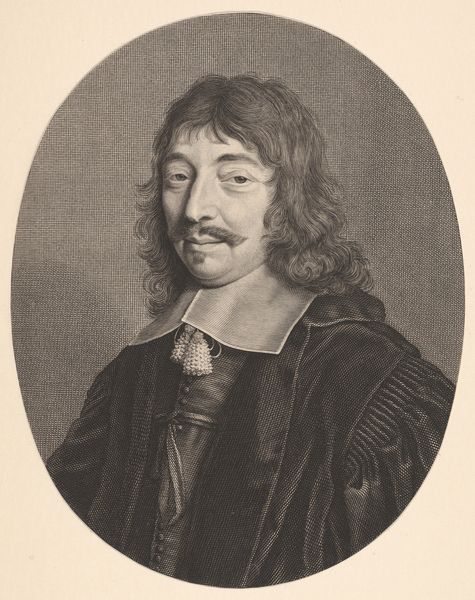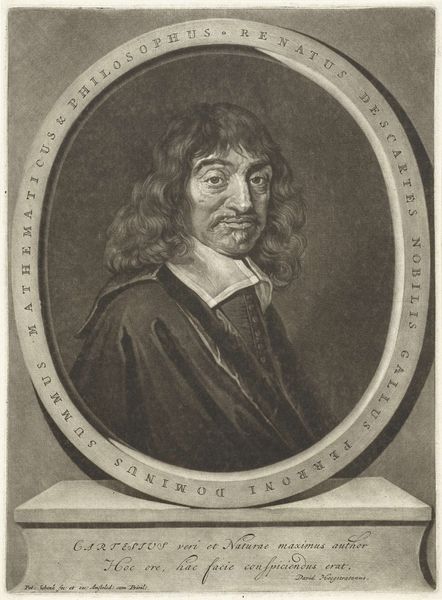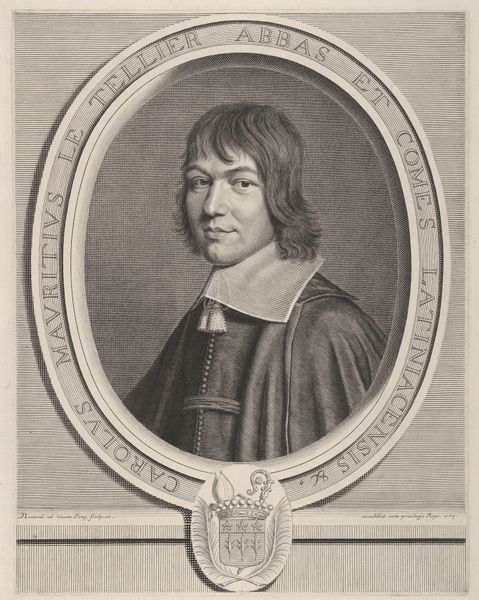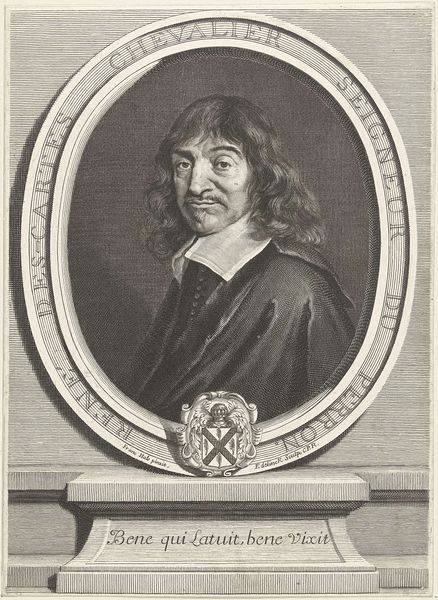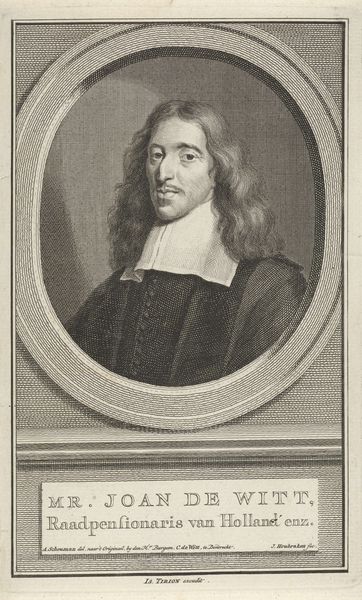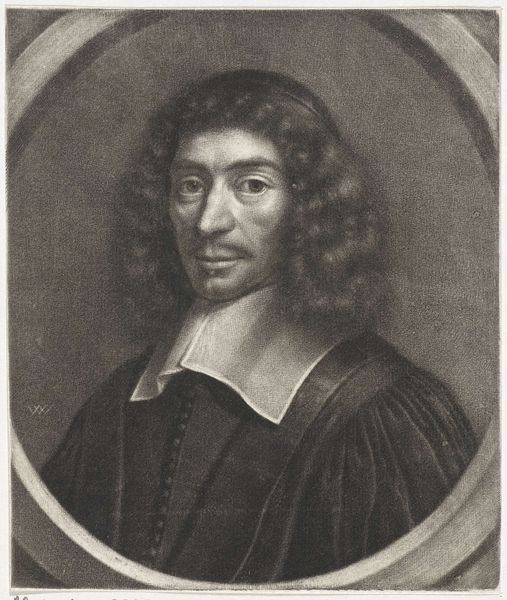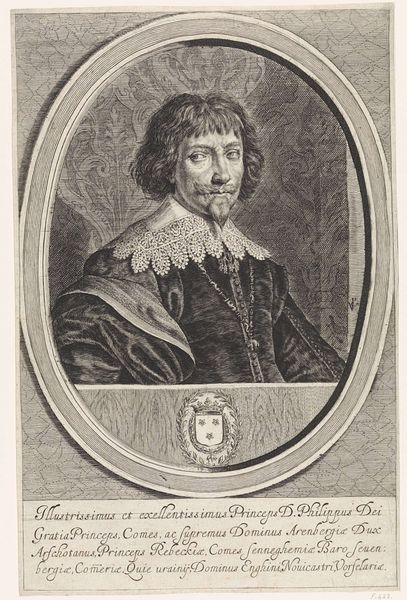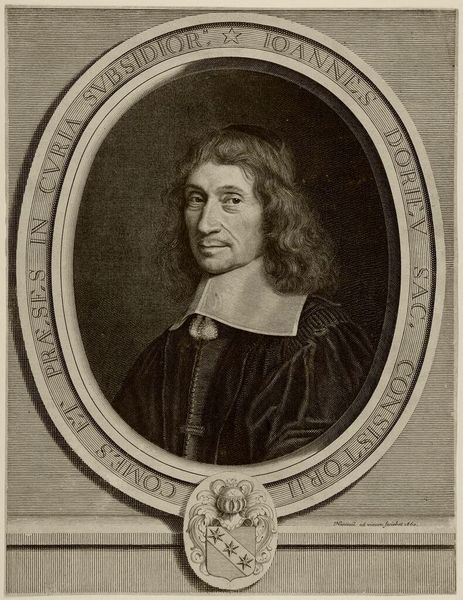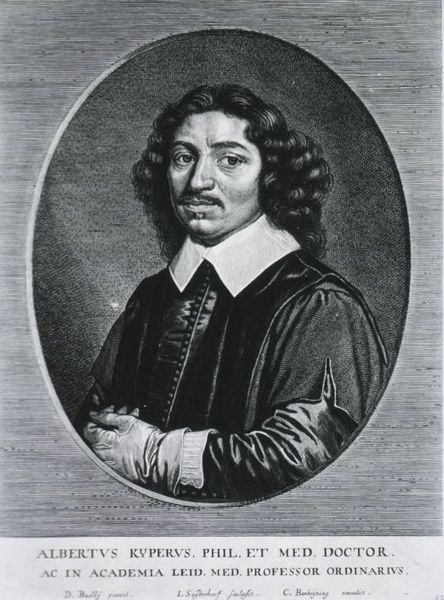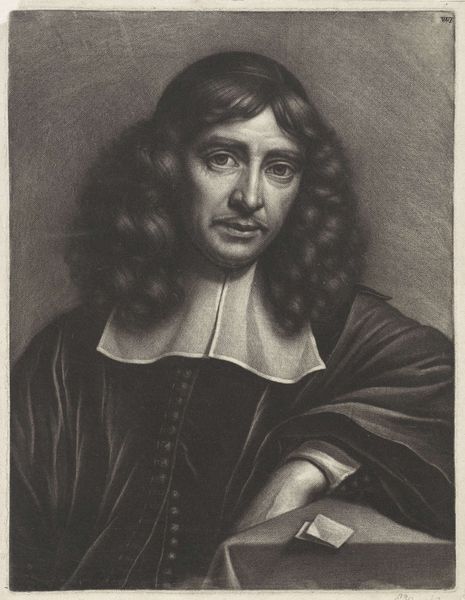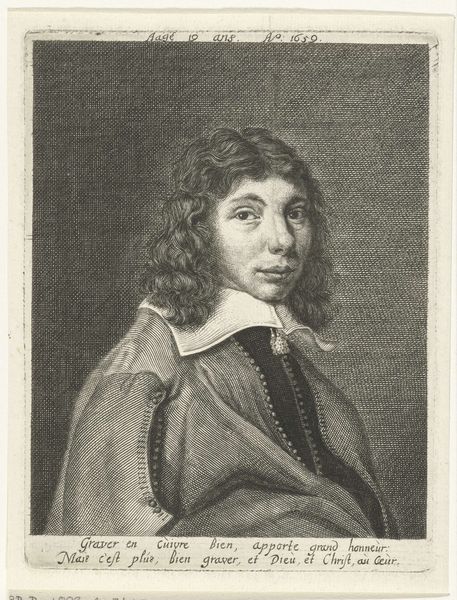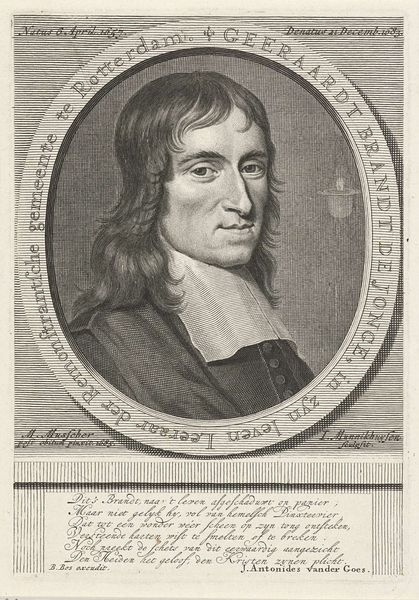
painting, oil-paint
#
portrait
#
baroque
#
dutch-golden-age
#
painting
#
oil-paint
Dimensions: support height 69.7 cm, support width 60 cm, outer size depth 9.5 cm
Copyright: Rijks Museum: Open Domain
Curator: This portrait is striking, isn't it? There’s a certain stillness in the sitter’s gaze. Editor: Yes, but a somewhat smug stillness if you ask me. The portrait depicts Henrick Hooft, dating back to 1640 and masterfully created by Michiel Jansz. van Mierevelt using oil paint. Hooft appears self-assured, almost confrontational. Curator: Mierevelt was known for his ability to capture the likeness and social standing of his subjects, wasn't he? These commissioned portraits were significant status symbols during the Dutch Golden Age. The lace collar alone speaks volumes about wealth and status. Editor: Precisely. And yet, what about that asymmetrical haircut, or the somewhat affected expression? There's an interesting tension here between the formal presentation of power and something else. The rise of powerful merchant classes often leads to attempts to emulate aristocratic codes, even though social mobility does not mean equal status or privilege. Curator: That's a really interesting angle. How these portraits reflect the social and economic structures, that were just beginning to take shape at this time, with burgeoning trading routes creating a more socially diverse group of wealthy people, versus the traditional old families with aristocratic status. I would even suggest a performative reading of identity. Look at his gaze - is this quiet confidence or is he playing the role? Editor: You're highlighting that performative element is critical, as portraiture always is a carefully constructed narrative. To think, all of this can be found captured so vividly at the Rijksmuseum. It forces us to question not just who Henrick Hooft was, but how the society of his time understood power and presentation, not only that, but also who was allowed to construct the social narratives around what it meant to be 'seen' at this time. Curator: I agree wholeheartedly. Reflecting on these images and their context is essential. Editor: Indeed, a journey through time that enriches our understanding of both art and societal development.
Comments
rijksmuseum about 2 years ago
⋮
The demand for portraits in the Netherlands was great in the 17th century. Michiel Jansz van Mierevelt was the most productive and successful portraitist in Delft: according to a somewhat exaggerated contemporary account, the artist painted around 10,000 portraits. His fame extended beyond the city limits. Both in their twenties, Henrick Hooft and Aegje Hasselaer of Amsterdam had themselves eternalized in paint by him on the occasion of their marriage.
Join the conversation
Join millions of artists and users on Artera today and experience the ultimate creative platform.

